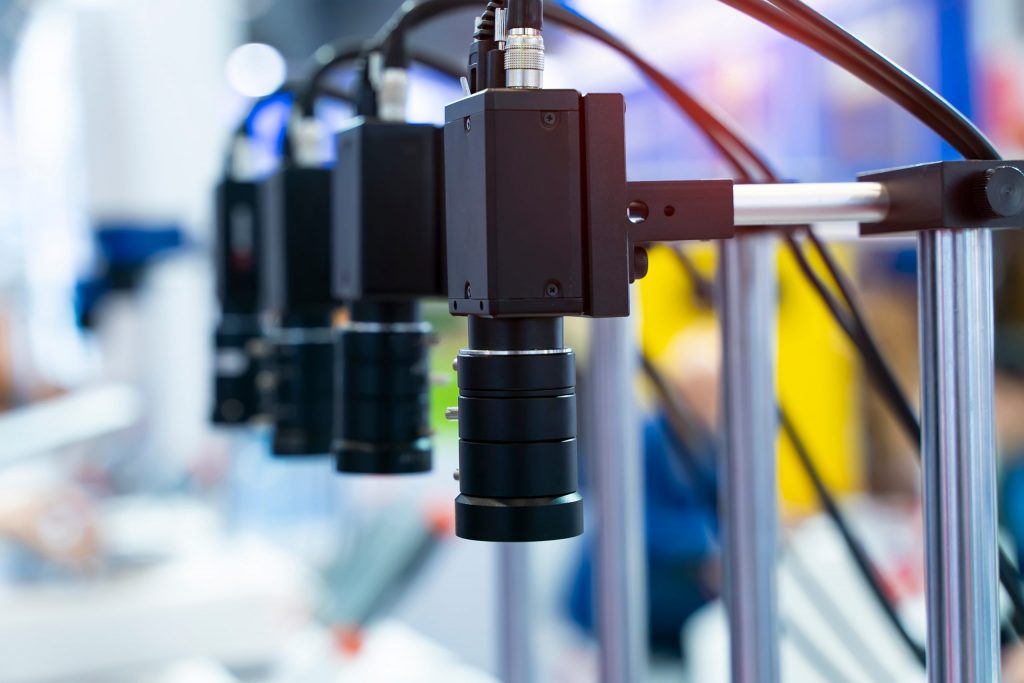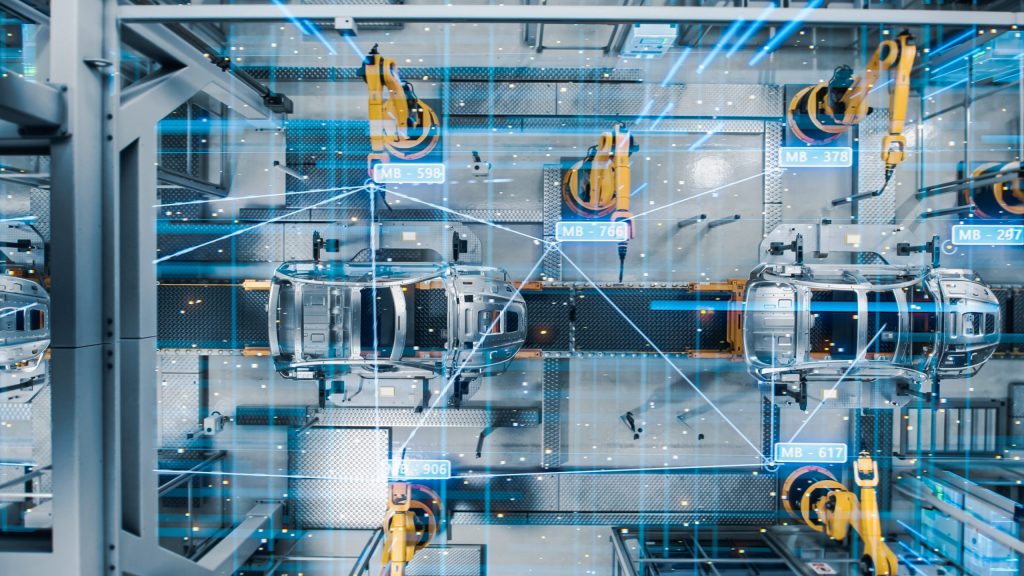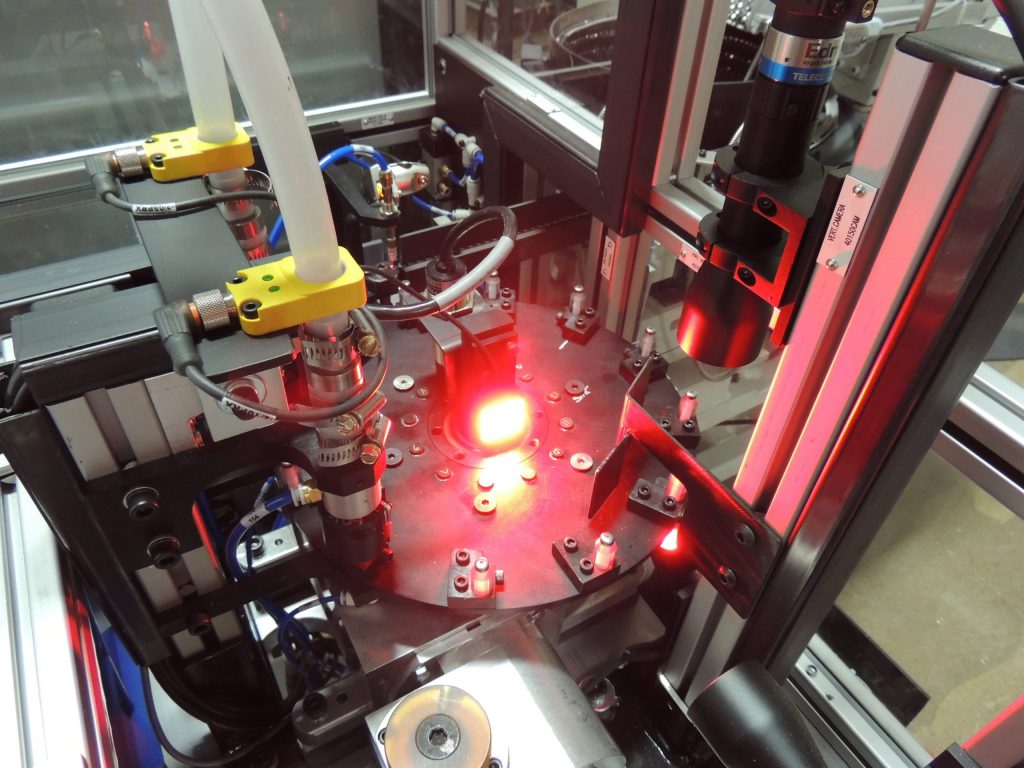What Is Machine Vision?
A manufacturing assembly line using vision system inspection often depends on machine vision to help determine a specific action to take on an item being assembled or processed. A machine vision system is like the “eyes” of an inspection machine. It searches for defects or differences, and helps smart manufacturing systems make key processing decisions. Many businesses utilizing assembly (line) automation rely on machine vision systems to improve the quality and efficiency of their operations.
How Machine Vision Works
A machine vision camera will capture visual information from all around the items being processed or sorted. Then, using a combination of hardware and software, it processes the images and uses that information in various applications like stamping, flipping, redirecting, etc.
For additional efficiency, machine vision systems often incorporate specialized optics to acquire information needed to trigger an action. By customizing specific tools to gather unique characteristics within an image, items can be processed, analyzed, and measured more quickly.
What Pieces Make Up Machine Vision Systems?
Special machine vision lighting and specific machine vision software are required when using machine vision systems in a manufacturing setting. However, some common components and processes are:
- Lighting – to brighten an object or area to make the features more clear

- Lenses – to capture the image and pass it into the camera sensor
- Capture boards, frame grabbers or sensors – to process the picture taken by the camera and convert it to a digital format
- Processors – to run software and related algorithms to pull out the necessary information from the digital image
- Communication Systems – to enable the machine vision cameras and processing system to interact with other components of the broader vision system inspection
How AI and Machine Vision Intersect
Due to its ability to process information at phenomenally high speeds, AI is being integrated into many machine vision systems. It is becoming increasingly important to process components near-instantaneously on the assembly line. Because AI is much more proficient at identifying patterns than the human eye, this new technology is stepping into the role of several key quality assurance steps.
However, as Genevieve Diesing points out, even though AI is helping to make vast improvements in machine vision, “Itʼs not yet a perfect solution. Due to inherent technology constraints, the domain of visual quality inspection didnʼt evolve accordingly.” As a result, while AI is present, it is not as dominant in machine vision as it is in other areas of assembly (line) automation.
Machine Vision vs. Computer Vision

These two systems are used in similar scenarios and complete similar functions. However, the difference between the two is that a machine vision system operates using custom computer hardware and software, while computer vision is a broader system that completes a wide range of tasks. Computer vision can evaluate uploaded images or media scraped from the internet. Computer vision can also analyze “images” from motion detectors, infrared sensors, or other non-video sources. Put simply, machine vision is just a subset of the larger computer vision ecosystem.
Types of Machine Vision
Machine vision is becoming a vital component of smart manufacturing. Machine vision camera lighting, embedded IIoT sensors, and industrial computers are just a few pieces of equipment necessary to collect and process essential information to increase efficiency at every step of an assembly line. At +Vantage, we offer powerful 2D and 3D vision systems for 100% inspection, assembly verification, and other advanced processes. Examples include:

- 3D Visual Inspection Sensors
- 3D Laser Line Profilers
- 3D Structured Lighting
- Fixed-Mount 3D Sensors for In-Line Applications
- Robot-Mounted 3D Sensors for Flexible Inspection
- 2D Visual Inspection Sensors
- 2D Industrial Visions Systems
- Telecentric Lenses for Dimensional Inspection
- Custom Lensing and Setups for Specific Application Requirements
- 2D Vision Cameras
- 2D IPV Sensors
How +Vantage Can Help
+Vantage is a global company with offices and support centers worldwide. We can help implement inspection and testing systems and other improvements to your manufacturing line to help with overall operational efficiency. If you are ready to implement machine vision in your manufacturing line, we are an automation company you can trust.
From battery assembly to aerospace/automotive assembly automation, we do it all with an approach tailored to meet your needs. No matter the size of your business, our experts will work with you to find the most effective system to streamline your process and increase your productivity. Learn more about the +Vantage approach, and how we can benefit your manufacturing process.
Download our FREE Quick Guide eBook!


